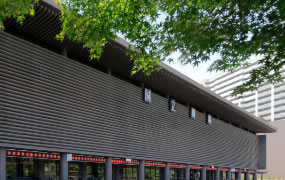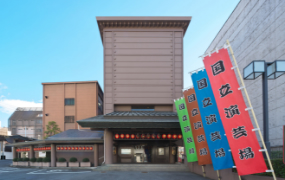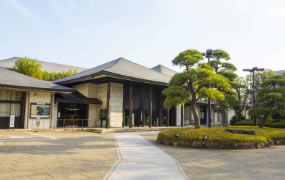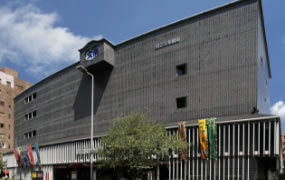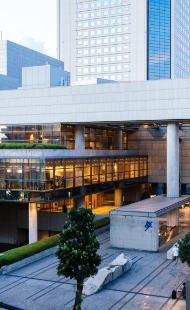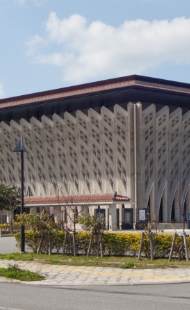Our History
Japan Arts Council is the central performing arts facility and one of the leading public support providers for cultural and artistic activities.
The foundation of the Council dates back to July 1966, following the promulgation of the National Theatre Law. It was initially founded as National Theatre, a special public corporation, for the purpose of preserving and promoting Japan’s traditional performing arts.
In November of the same year, the National Theatre was formally inaugurated. The Theatre has been presenting traditional performing arts from Kabuki and Bunraku to traditional Japanese dance, music, folk performances, Shomyo (Japanese Buddhist chant), Gagaku (Japanese court music), and so on. Then, in March 1979 the National Engei Museum (National Engei Hall)—introducing popular entertainment such as Rakugo, Kodan (storytelling), and other Engei performances—opened its doors. In September 1983, the National Noh Theatre specializing in Noh performances (Noh and Kyogen) was established. In March of the following year, National Bunraku Theatre in Osaka, which shows Bunraku and various performing arts originated from Kyoto-Osaka district was set up.
Meanwhile, the National Theatre Law was revised in April 1989, adding a new section of contemporary performing arts; consequently, the New National Theatre Tokyo—staging opera, ballet, dance, and drama—was established in October 1997. The Law was partially amended in March 1990, setting the endowment of Japan Arts Fund to the Theatre to further support cultural and artistic activities. After the modification, the Theatre was renamed Japan Arts Council Special Public Corporation. In December 2002, the Act on the Japan Arts Council, Independent Administrative Agency, was promulgated. It led the Council to become an independent administrative agency in October 2003. In January of the following year, Okinawa saw the inauguration of a new theater; National Theatre Okinawa was opened to present traditional Okinawan performing arts, including Kumiodori.
Throughout history, the Council has been contributing to the enhancement of arts and other modes of culture across Japan.
Timeline
| 1966 | June 27 | Promulgation of the National Theatre Law |
|---|---|---|
| July 1 | Establishment of National Theatre Special Public Corporation | |
| Nov.1 | Opening of National Theatre (Hayabusa-cho, Chiyoda-ku, Tokyo) | |
| 1979 | Mar.22 | Opening of National Engei Museum (National Engei Hall) (Hayabusa-cho, Chiyoda-ku, Tokyo) |
| 1983 | Sept.15 | Opening of National Noh Theatre (Sendagaya, Shibuya-ku, Tokyo) |
| 1984 | Mar.20 | Opening of National Bunraku Theatre (Nippon-bashi, Chuo-ku, Osaka-shi, Osaka) |
| 1990 | Mar.30 | Establishment of the Japan Arts Fund; the name of National Theatre Special Public Cooperation is changed to Japan Arts Council Special Public Cooperation |
| 1997 | Oct.10 | Opening of New National Theatre, Tokyo (Hon-machi, Shibuya-ku, Tokyo) |
| Nov.1 | Opening of the Stage Set and Design Centre (Toyosatodai, Choshi-shi, Chiba) | |
| 2002 | Dec.13 | Promulgation of the Act on Japan Arts Council, Independent Administrative Agency |
| 2003 | Mar.19 | Opening of Traditional Performing Arts Information Centre (on the premises of National Theatre) |
| Oct.1 | Japan Arts Council’s organizational form is changed to Independent Administrative Agency | |
| 2004 | Jan.18 | Opening of National Theatre Okinawa (Jitchaku, Urasoe-shi, Okinawa) |
| 2019 | Apr.1 | Establishment of the Japan Cultural Expo Secretariat |


